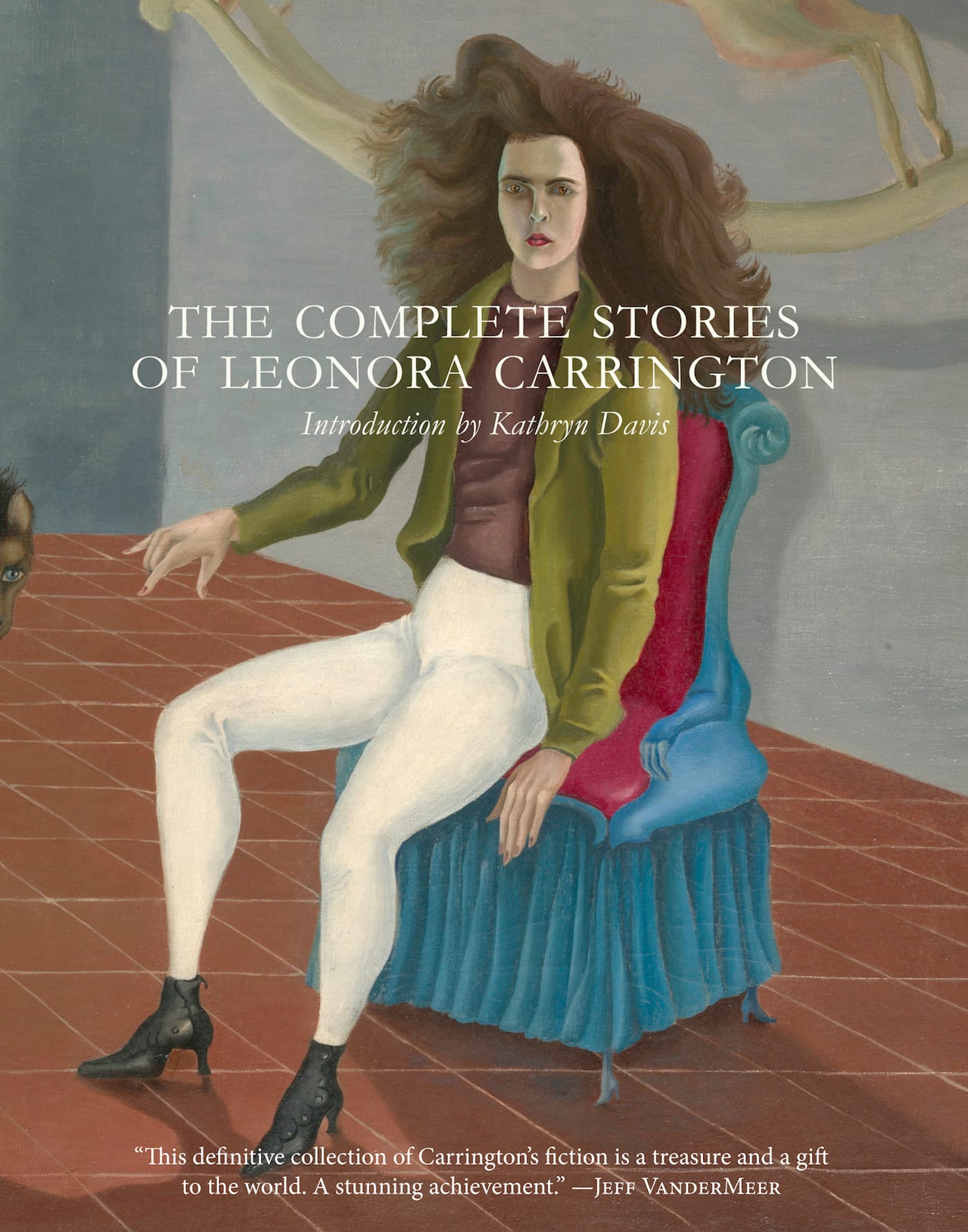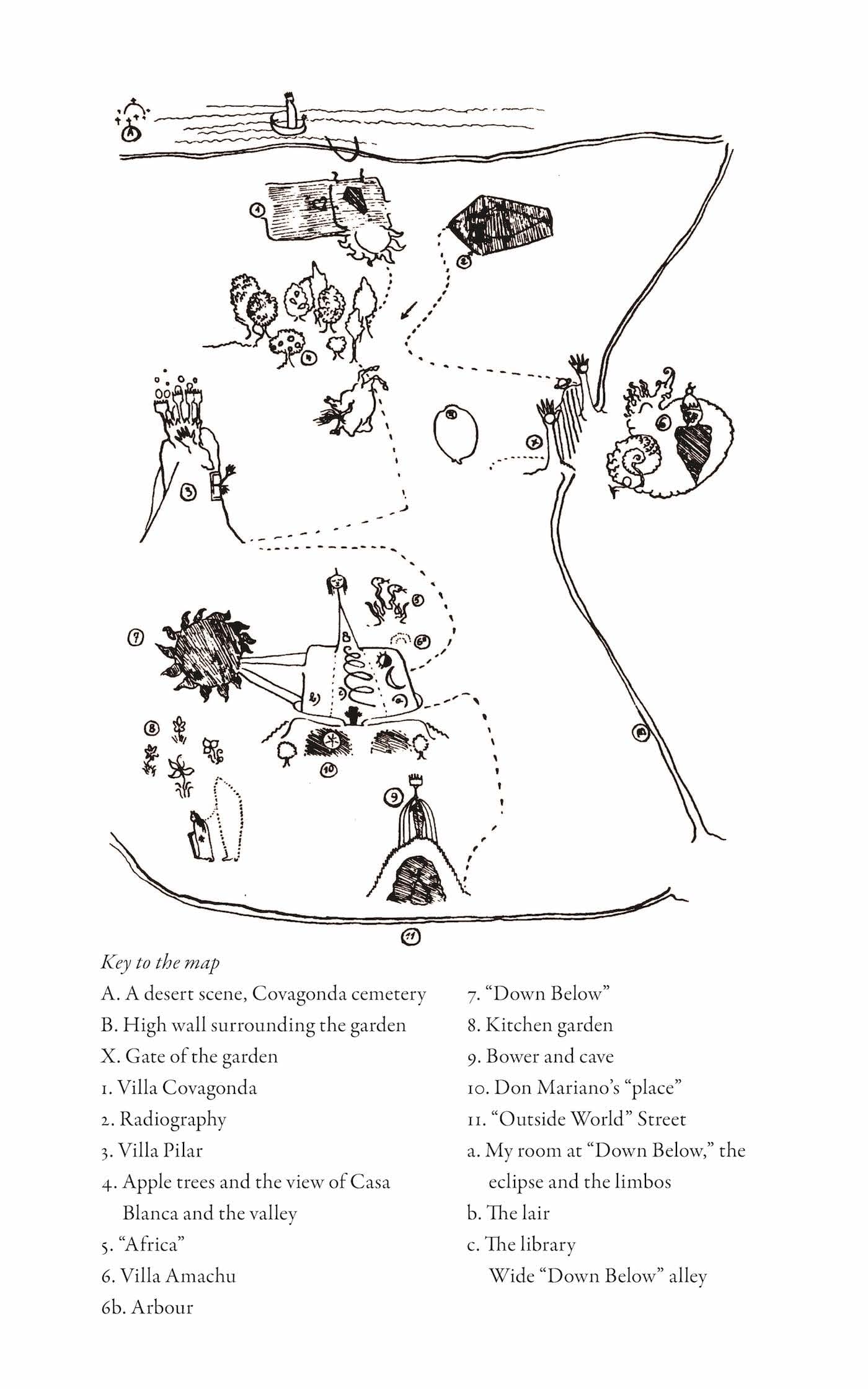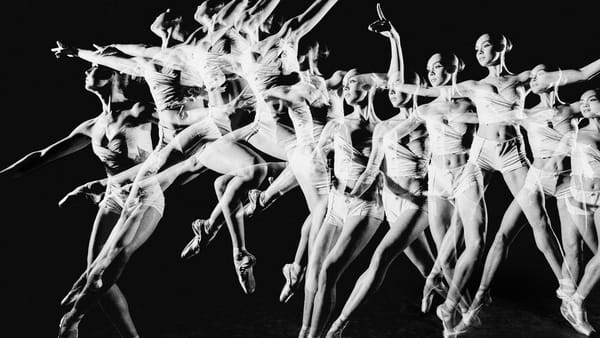The Surrealist Satire of Leonora Carrington
These stunningly strange, arrestingly intellectual constructs treat the human imagination with humor and forgiveness.

Despite the title of this beautiful book, The Complete Stories of Leonora Carrington, the author’s writings are not what most readers would define as traditional “stories.” In some way the works are similar to fairy tales, most focusing on speaking animals and magical creatures. But Carrington’s writings do not accord with the standard tales by the Grimm Brothers, Hans Christian Andersen, Peter Christian Asbjørnsen and Jørgen Moe, or even the short prose romances of Charles Perreault and other French authors. With their half-forgotten narratives, their ragged and inconclusive endings, and a focus on visual images as opposed to plot, one might describe Carrington’s writings as being scenarios or literary tableaus which gather her characters into a single space before abruptly ending.
In “The House of Fear,” from 1937-1938, for example, while “walking in a certain neighborhood,” the central figure is suddenly stopped by a horse who demands she come with him to a strange house, filled with creatures in ecclesiastical dress, to see the “beautiful inlaid floor” made of turquoise, stuck together with gold. Soon after, the horse admits that he is bored with his job as tour guide, and that the floor is not quite as beautiful as he has described it; he then further invites the woman to another party that same evening.
The seemingly friendless protagonist is glad to have the horse as a friend, and accepts his offer. At 9:00 p.m. the horse picks her up to attend the party at the Castle of Fear, fear herself being the mistress of the house. In the intensely cold room in which several other horse attendees are gathered, Lady Fear speaks of a new game she has created to entertain her dining friends.
You must all count backward from a hundred and ten to
five as quickly as possible while thinking of your own fate
and weeping for those who have gone before you. You must
simultaneously beat time to the tune of “The Volga Boatman”
with your left foreleg, “The Marseillaise” with your right
foreleg, and “Where Have You Gone, My Last Rose of
Summer” with your back two legs.
Indeed the horses, trying to warm themselves in the bitter cold, begin to beat the floor with their hooves, while the human guest hopes to escape the stare of Fear herself. The story ends with the line: “I was hoping she wouldn’t see me, but I had an uncomfortable feeling that she could see me very well with her great eye (she had only one eye, but it was six times bigger than an ordinary eye). It went on like this for twenty-five minutes, but….”
In “The Three Hunters” (from 1937-1940), the narrator, resting in a deep forest is awakened by a hare falling to her stomach, followed by an elderly hunter, Mcflanagan, wearing a hunting jacket the “colour of Damascus rose, a bright green hat with orange plumes, and very long black boots trimmed with summer flowers. He wore no trousers.”
Soon after the agile hunter leaps away, inviting her to visit his manor and advising her to “Take this path on the left straight on and cross every path you come to. It’s the first manor after the eighteenth crossroads.”
She finally arrives at the manor at midnight, met by Mcflanagan, “the Terror of the Forest” and his brothers Mcbologan, “the Curse of the Forest,” and Mchooligan, “The Abomination of the Forest,” who is also their cook. In a room “a hundred yards long and fifty wide,” she faces a table of six dozen hares, a hundred wild ducks, and nineteen boars. It is clearly a world of excess.
After hours of near-silence, Mcbologan shows the narrator their family trophies, which are actually row after row of sausages; evidently, his grandfather had a reaction to a plate full of beans (“A certain noise escaped him” that same morning in church), which after which the good Lord turned into sausages, presumably representing shit. The story ends with the line: “He turned away with great emotion, and I heard his bounding steps disappear into the manor house.”
Even if we perceive these tales as surrealist satires — in these same years Carrington was living with the surrealist artist Max Ernst — we have to ask what is the “meaning” of her tales? Other than their satiric dimensions and vivid imagery, why is she spinning these fantastical webs?

Yet, it is difficult not to feel enchanted by her “woolly and portentous” works (as The Times Literary Supplement described them). And some of these fragmentary pieces do create, if not a coherent narrative, a mad world that has a logic of its own. Often Carrington is like an eccentric aunt, telling stories to her nephews and nieces as she is making them up.
“The Sisters,” is a fascinating horror-like tale reminiscent of Charlotte Brontë’s Jane Eyre. In this story the beautiful, but very human Drusille, is about to receive her lover, a poverty-stricken King returning from a multi-year voyage. As her nasty servant Engadine and drunken servants prepare a vast dinner, she escapes with a bottle of honey to a locked away room in the attic room where she keeps her sister, Juniper, who has begun to transform into a bird: “Her body was white and naked; feathers grew from her shoulders and round her breasts. Her white arms were neither wings nor arms. A mass of white hair fell around her face, whose flesh was like marble.”
Distracted by the King’s arrival, she forgets to lock Juniper’s door upon her exit; soon after, while praising Drusille’s beauty, her lover suddenly sees a vision which we imagine is the escaped bird-like creature, determined to see the moon.
At the grand banquet, Juniper suddenly appears to Engadine, sucking her blood and transforming herself fully to an avian creature: “Her feathers shone like snow in the sun, her tail sparkled with all the colours of the rainbow.” Afterwards, Drusille and her lover Jumert are left in a very human bacchanalian morning-after scenario:
Meat, wine, cakes, all half eaten, were heaped around them in
extravagant abundance. Huge pots of jam spilled on the floor
made a sticky lake around their feet. The carcass of a peacock
decorated Jumart’s head. His beard was full of sauces, fish
heads, crushed fruit. His gown was torn and stained with all
sorts of food.
Juniper, meanwhile, ascends to the moon.
All of Carrington’s writings are invested with a sense of female emancipation that carries with them a sense of female entitlement that seems attune with today’s feminist concerns. In the lovely futurist tale, “How to Start a Pharmaceuticals Business,” written in the early 1960s, Carrington, explores, with great humor, the female narrator’s entrepreneurial skills. The story of is a comic satire in a Mexican society that long ago outlawed all electrical forms of communication, silencing radios, telephones, televisions, walkie-talkies, microphones (in today’s world it would include computers and cell-phones as well). The narrator relates the current culture’s interpretation of the strange relics of the past forgotten culture of the twentieth century.
Dining with two important friends in a local cemetery, the central character —Carrington herself — is told she has won the lottery. Her reward is a small coffin containing the remains of an unknown figure of the past, Joseph Stalin. Not knowing quite what to do with the “treasure,” the author discovers that the hair and other body parts are wonderful in the treatment of:
Whooping cough
Syphilis
Grippe
Childbearing
and other convulsions.
Although the elixirs she creates do not make her rich, she enjoys “a life of ease and tranquility.”
If Leonora Carrington’s short works are not always fulfilling as literature, they are all stunningly strange, arrestingly intellectual constructs that treat the human imagination with humor and forgiveness for our all-too human foibles. As those around her fall and crumble, or escape never to return, the sad “hero” of each of these tales relates, “I was alone in the night without light.”
The Complete Stories of Leonora Carrington (2017), with an introduction by Kathryn Davis, is published by Dorothy, a publishing project and is available from Amazon and other online booksellers.




